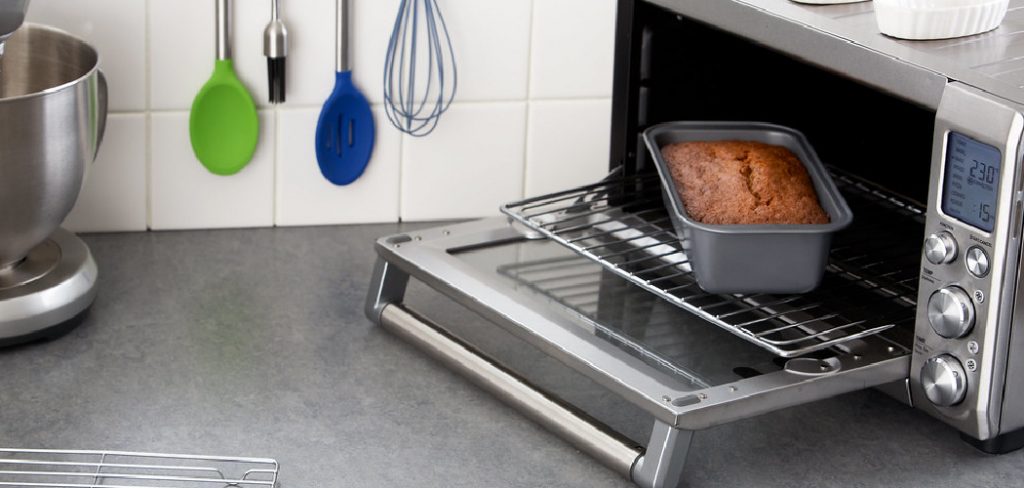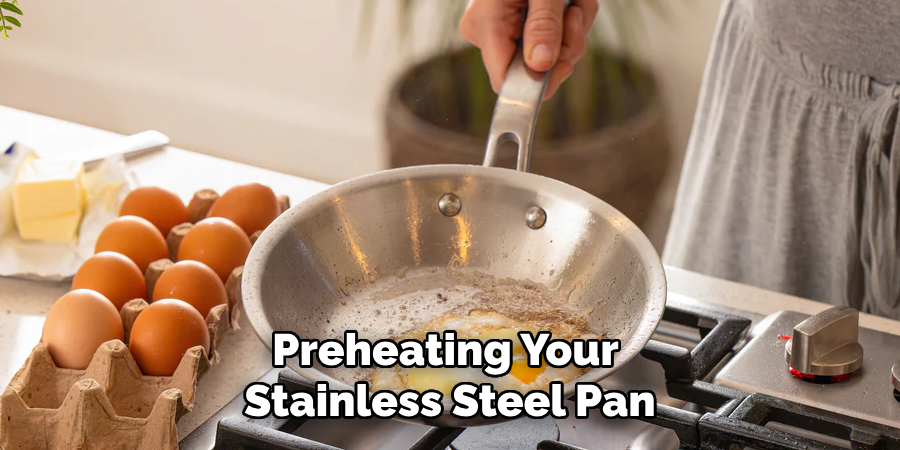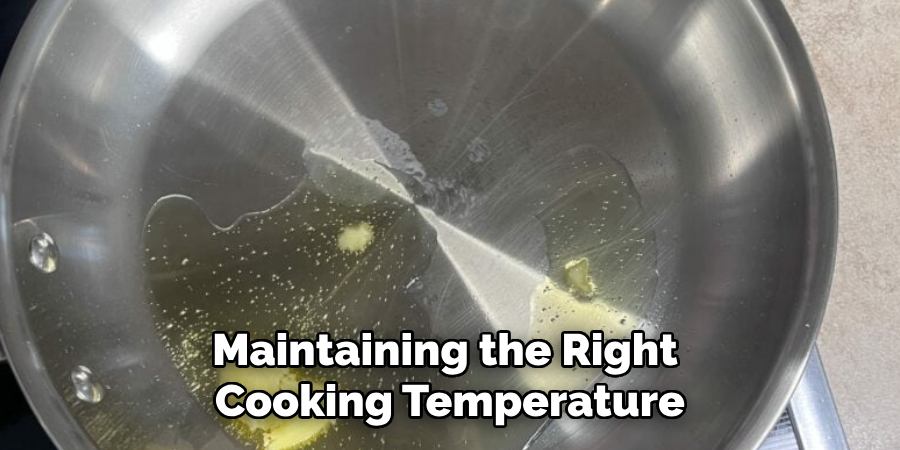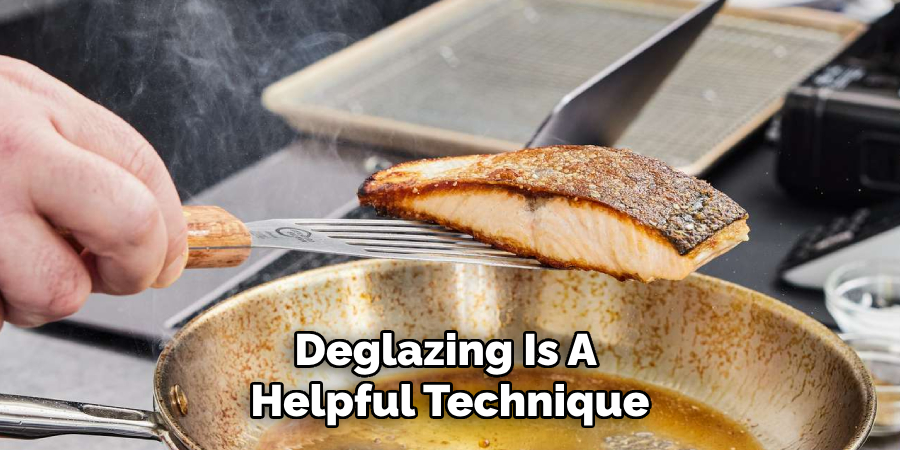Stainless steel cookware is popular in many kitchens due to its durability and sleek appearance.
However, one common challenge that can arise when using stainless steel pans and pots is food sticking to the surface during cooking. This can be frustrating and make the cooking process more difficult. But fear not, as some effective techniques and tips can help you prevent food from sticking to stainless steel. By implementing these strategies, you can ensure that your cooking experience with stainless steel cookware is a breeze, with easy food release and hassle-free cleanup.

In this guide on how to keep food from sticking to stainless steel, we will discuss the common causes of food sticking, as well as provide practical solutions to prevent it from happening.
Causes of Food Sticking to Stainless Steel Cookware
Before we dive into the solutions, it’s essential to understand why food sticks to stainless steel cookware in the first place.
Several factors can contribute to this issue, including:
- High Heat: Stainless steel is a poor conductor of heat, which means it takes longer for the pan to heat up and evenly distribute the heat. This can cause hot spots on the cooking surface, making food more likely to stick.
- Insufficient Oil or Fat: When using stainless steel cookware, it’s important to use enough oil or fat for cooking. Without enough lubrication, food is more likely to stick to the surface.
- Moisture on Food: Food with high moisture content, such as vegetables and some proteins like fish, can release moisture while cooking. This moisture can create steam and cause food to stick to the pan.
- Cooking Delicate Foods: Delicate foods or foods with a high sugar content, such as eggs or pancakes, tend to stick more easily. The sugars in these foods caramelize quickly and can adhere to the stainless steel surface.
Now that we know why food sticks to stainless steel cookware, let’s explore some effective strategies for preventing it from happening.
What Will You Need?
Before we get into the tips and techniques, here are some essential items you will need to keep food from sticking to stainless steel cookware:
- Oil or Fat: As mentioned earlier, using enough oil or fat prevents food from sticking to stainless steel. You can use any cooking oil or fat, such as olive oil, vegetable oil, butter, or even bacon grease.
- Silicone Cooking Utensils: Using silicone cooking utensils instead of metal ones can help prevent scratching the surface of your stainless steel cookware. They also have a non-stick property that makes food release from the pan easier.
- Paper Towels or Cloth: To remove excess moisture from food before cooking, it’s helpful to have paper towels or a clean cloth.
- Salt: Adding a small amount of salt to the oil in your pan can act as an additional non-stick agent. However, be sure not to add too much salt, as it can affect the flavor of your food.
Once you have these basic items, let’s move on to the tips and techniques for keeping food from sticking to stainless steel cookware.
8 Easy Steps on How to Keep Food From Sticking to Stainless Steel
Step 1: Preheat Your Pan

Before cooking, preheating your stainless steel pan is essential to create a non-stick surface. Place the pan on the stove over medium heat for a few minutes until it becomes hot. This helps to distribute the heat evenly and prevents food from sticking to the surface. You can sprinkle a few drops of water onto the surface to test if the pan is preheated correctly. If the water droplets sizzle and evaporate quickly, the pan is ready for cooking. Remember, preheating your pan is crucial in achieving perfectly cooked, non-stick results.
Step 2: Use the Right Cooking Oil or Fat
Choosing the right cooking oil or fat prevents food from sticking to stainless steel cookware. Opt for oils with high smoke points, such as canola, grapeseed, or avocado oil, as they can withstand higher cooking temperatures without breaking down.
Avoid oils with low smoke points, like olive oil, as they can burn and leave a sticky residue on the pan’s surface. It’s also important to use adequate oil or fat to create a thin, even coating on the pan. Too little oil may result in food sticking, while too much oil can lead to excess residue or a greasy texture. Remember, using the right cooking oil or fat in the correct quantity is key to achieving a non-stick surface and enhancing the flavor of your dishes.
Step 3: Control the Cooking Temperature

Maintaining the right cooking temperature is essential when using stainless steel cookware to prevent food from sticking. Start by preheating the pan on medium heat for a few minutes before adding any ingredients. This allows the heat to distribute evenly across the pan’s surface. Once the pan is heated, reduce the heat to a medium-low or low setting to avoid overheating. If the pan gets too hot, the food may stick or burn. Remember, stainless steel has excellent heat conductivity, so finding the right balance between heat and cooking time is crucial to achieving optimal results. Adjust the temperature as needed during cooking to ensure the food cooks evenly without sticking.
Step 4: Properly Prepare and Handle the Ingredients
Preparing your ingredients properly is integral to preventing food from sticking to stainless steel cookware. Before placing it in the pan, begin by ensuring the food is as dry as possible. Use a paper towel or clean cloth to pat dry proteins like chicken, fish, or tofu, as excess moisture can interfere with proper searing and cause sticking.
Additionally, bring your ingredients to room temperature before cooking, which helps promote even cooking and reduces the risk of temperature shock that could cause sticking. For foods like vegetables, trim and cut them uniformly to ensure they cook evenly and prevent certain pieces from sticking due to inconsistency in size. Proper preparation minimizes sticking and enhances the overall quality of your cooked dishes.
Step 5: Avoid Overcrowding the Pan

It is crucial to avoid overcrowding the pan when cooking with stainless steel cookware. Placing too much food in the pan simultaneously reduces airflow and lowers the pan’s temperature, causing moisture to accumulate and food to stick. For best results, cook in small batches, ensuring each piece of food has enough space to cook evenly and achieve a good sear. If you need to cook a large amount of food, consider doing so in separate batches or using multiple pans. You can maintain optimal cooking conditions and prevent sticking by giving the food room to breathe.
Step 6: Allow Food to Release Naturally
One of the most common mistakes when cooking with stainless steel is attempting to move or flip food too early. Stainless steel pans naturally create a temporary bond with food during the cooking process, which will be released once the food is adequately seared or cooked. If you try to move the food before it is ready, it may tear or stick to the surface. Be patient, and allow the food to cook undisturbed for the recommended time. Once it is prepared to release naturally, you will notice that it separates from the pan effortlessly, making it much easier to handle. Using this method ensures a clean cooking process and prevents unnecessary sticking.
Step 7: Deglaze the Pan

Deglazing is a helpful technique that not only enhances flavor but also aids in releasing any stuck-on food or residue from the pan’s surface. After cooking, especially when using high heat, bits of food may remain on the pan due to caramelization. To deglaze, reduce the heat and add a small amount of liquid, such as water, broth, or wine, to the pan. Use a silicone or wooden spatula to scrape the pan gently, loosening the stuck bits. This technique makes cleanup easier and can transform the deglazed liquid into a flavorful sauce for your dish.
Step 8: Clean and Maintain Your Stainless Steel Cookware
Proper care and maintenance of your stainless steel cookware are essential to keeping it in excellent condition and ensuring better non-stick performance over time. After cooking, allow the pan to cool before washing it with warm, soapy water. Avoid using abrasive cleaning materials like steel wool, as these can scratch the pan’s surface. For stubborn stains or burnt residue, create a paste using baking soda and water, then gently scrub the surface. Regular cleaning and proper maintenance will help preserve the quality and effectiveness of your stainless steel cookware, making your cooking experience smooth and stress-free.
By following these steps and combining good techniques with proper care, you can ensure your stainless steel cookware remains a reliable and valuable tool in your kitchen for years to come.
Conclusion
In conclusion, when used correctly, stainless steel cookware is an excellent option for achieving a non-stick cooking experience.
By choosing the right type of oil, controlling the cooking temperature, properly preparing and handling ingredients, avoiding overcrowding the pan, allowing food to release naturally, deglazing the pan, and maintaining your cookware, you can enjoy effortless cooking without worrying about sticking or messy cleanup.
Hopefully, the article on how to keep food from sticking to stainless steel cookware has given you valuable tips and techniques to make your cooking experience more enjoyable. So next time you reach for your trusty stainless steel pan, keep these tips in mind and get ready to create delicious meals with ease. Happy cooking!
Edmund Sumlin is a skilled author for Metal Fixes, bringing 6 years of expertise in crafting a wide range of metal fixtures. With a strong background in metalwork, Edmund’s knowledge spans various types of fixtures, from decorative pieces to functional hardware, blending precision with creativity. His passion for metalworking and design has made him a trusted resource in the industry.
Professional Focus:
- Expert in Metal Fixtures : Edmund aesthetic specializes in creating durable and innovative metal fixtures, offering both appeal and functionality. His work reflects a deep understanding of metalworking techniques and materials.
- Sustainability Advocate : He is dedicated to using sustainable practices, ensuring that every fixture is crafted with eco-friendly methods while maintaining high-quality standards.
In his writing for Metal Fixes, Edmund provides valuable insights into the latest trends, techniques, and practical advice for those passionate about metal fixtures, whether they are professionals or DIY enthusiasts. His focus on combining artistry with engineering helps others discover the true potential of metal in design.


